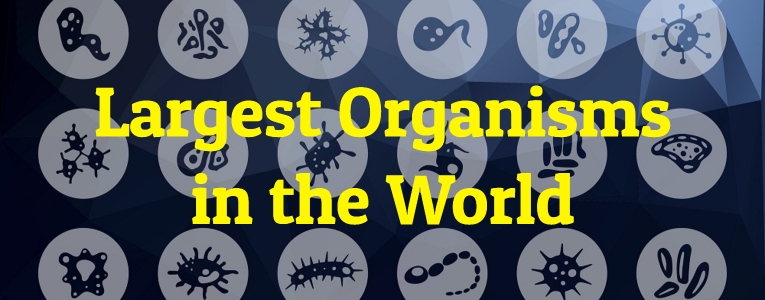Planet Earth is home to countless beautiful, intimidating, and awe-inspiring organisms of different types. From the highest wind currents to the darkest depths of the oceans, certain species of creatures stand above the rest in terms of size, reaching shocking lengths and masses.
With so many different organisms playing key roles in Earth’s ecological systems, you’re probably wondering what the largest of them are. Today we’ll be looking at 10 of the largest organisms in the world, and learning a little bit about what makes each one unique.
-
Lion’s Mane Jellyfish – (Cyanea capillata)
Location: Arctic and Northern Pacific and Atlantic Oceans
Type: Jellyfish
Unique Trait: Color changes with age
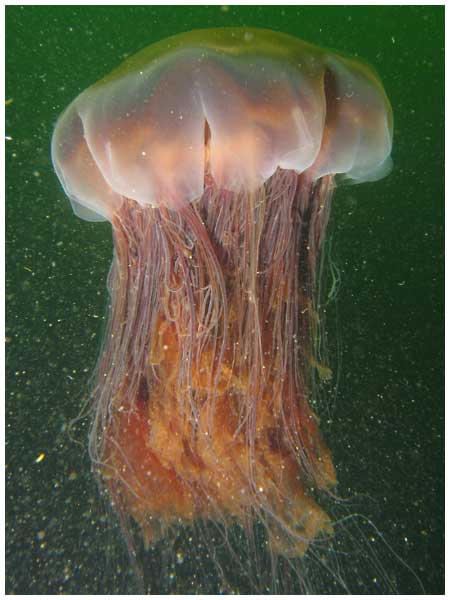
Source: wikimedia.org
The Lion’s Mane Jellyfish is the largest species of jellyfish in the world, and a truly awe-inspiring organism. Its domed “bell,” the top part of its body, can reach up to 8 feet in width, and its tentacular spread is projected to be around 246 feet across. These far-reaching tentacles are equipped with stinging cells meant to paralyze prey, and severe stings from the Lion’s Mane Jellyfish can even cause cardiac arrest in adult humans.
Did You Know?
While Lion’s Mane Jellyfish usually swim solo, they have been known to swarm during frequent storms or tides.
-
Common Ostrich – (Struthio camelus)
Location: Africa
Type: Flightless Bird
Unique Trait: Fast runners

Source: wikimedia.org
With males of the species reaching weights of approximately 330 pounds and towering at 9 feet tall, the Common Ostrich is undoubtedly the largest of all birds. Nearly half of this massive bird’s height is made up of its long neck, and its eggs average at 6 inches long and 3 pounds, making them the largest eggs in the world as well.
Did You Know?
Ostriches have such long intestines that it takes 36 hours for food to pass through their digestive tracts!
-
Giant Barrel Sponge – (Xestospongia muta)
Location: Caribbean Sea and the Gulf of Mexico
Type: Sponge
Unique Trait: Extremely long lifespan
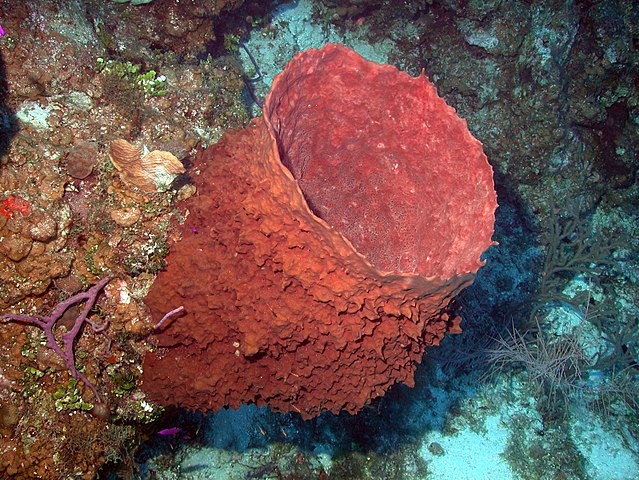
Source: wikimedia.org
The Giant Barrel Sponge is the largest species of sponge found in the Caribbean Sea, dwarfing its competition with structures that can reach 6 feet in diameter. This organism has been nicknamed “The Redwood of the Reef,” not only for its impressive size, but also for its lifespan: Giant Barrel Sponges have been found to be 2,000 years old, and can theoretically live for much longer.
Did You Know?
The cells that make up the Giant Barrel Sponge do not have specialized purposes, meaning that they can find a job wherever they’re needed. Specimens of this sponge have even been run through a blender, and managed to reform themselves afterwards!
-
Saltwater Crocodile – (Crocodylus porosus)
Location: Northern Australia and Southern India
Type: Semi-Aquatic Reptile
Unique Trait: Aggressive attitude

Source: wikimedia.org
Also called Estuarine Crocodiles or nicknamed “Salties”, Saltwater Crocodiles are said to be not only the largest of all reptiles, but the most dangerous crocodiles as well. Saltwater Crocodiles have a unique valve that closes off their throat, enabling them to open their mouths while submerged without swallowing water. However, since the valve cannot remain closed while swallowing, Salties drag their prey to shore for consumption.
Did You Know?
While the average male Saltwater Crocodile weighs around 1,000 pounds, specimens up to 2,200 pounds have also been discovered.
-
African Bush Elephant – (Loxodonta africana)
Location: Africa
Type: Land Mammal
Unique Trait: Prehensile trunk

Source: wikimedia.org
The African Bush Elephant is the largest land mammal in the world, and certainly an impressively large organism at up to 13 feet tall at the shoulder and up to 7 tons in weight. African Elephants can also reach a ripe old age of 70 years or so, which is the longest life span of any other land mammal besides humans.
Did You Know?
The trunk of an African Bush Elephant is prehensile, and contains up to 40,000 muscles and tendons!
-
Colossal Squid – (Mesonychoteuthis hamiltoni)
Location: Antarctic Waters
Type: Invertebrate
Unique Trait: Bioluminescence
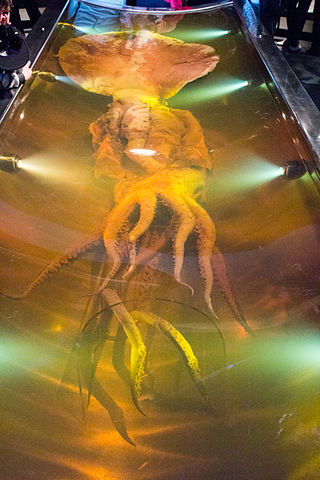
Source: wikimedia.org
Occasionally referred to as the Antarctic squid or giant cranch squid, the Colossal Squid is the longest of all invertebrates. While its cousin, the Giant Squid, can sometimes reach greater lengths and was once thought to be the largest, the Colossal Squid is heavier and more formidable. Since this gigantic invertebrate keeps mainly to the deeper waters of the ocean, specimens and photographic documentation are quite rare.
Did You Know?
The ends of the Colossal Squid’s tentacles feature very sharp hooks, presumably for grasping prey more effectively.
-
Whale Shark – (Rhincodon typus)
Location: All Tropical Seas
Type: Fish
Unique Trait: Plankton Diet
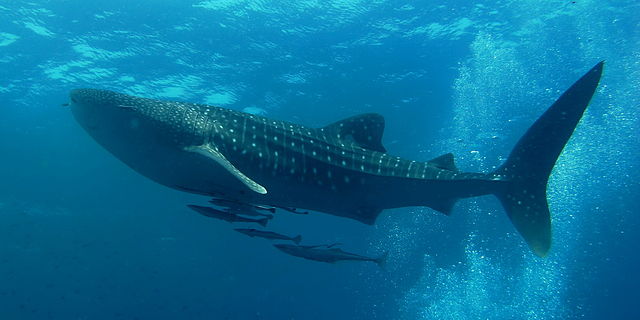
Source: wikimedia.org
The largest fish in the world, the Whale Shark, is the sole member of the genus Rhincodon. The massive Whale Shark sports an impressive set of 300 teeth, but does not use them to eat–instead, it eats mainly plankton and other tiny types of marine life. Along with its astounding size, this massive shark’s wide, blunt snout also makes it visually distinct from other types of sharks.
Did You Know?
Whale Sharks prefer warmer, more tropical waters, and 75% of them can be found in the Indian and Pacific Oceans.
-
Blue Whale – (Balaenoptera musculus)
Location: Arctic and Antarctic Oceans
Type: Aquatic Mammal
Unique Trait: Baleen
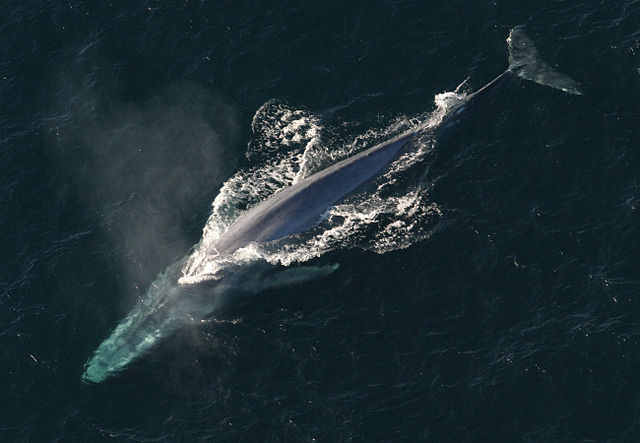
Source: wikimedia.org
Sometimes also called the “sulphur-bottom whale,” this baleen whale is the largest animal to ever have lived on Earth–and the loudest. It can sometimes reaching staggering record weights of 200 tons and sport a heart the size of a full-size automobile, making it too big to be kept in captivity.
Did You Know?
The Blue Whale’s mouth can contain up to 800 plates of black baleen, which serves to filter its sole food, krill, out of the ocean waters.
-
Quaking Aspen – (Populus tremuloides)
Location: North America
Type: Plant
Unique Trait: Creates same-gender clones
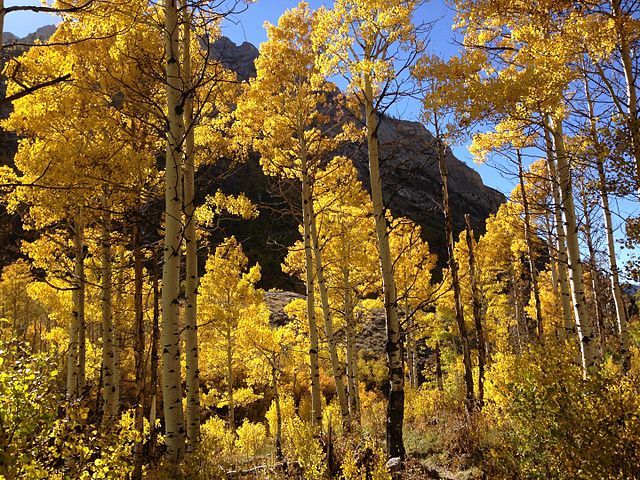
Source: wikimedia.org
At 80,000 years old, Pando, a glorious clonal colony of male trembling aspen trees, is said to be one of the oldest known living organisms on Earth. The trees look extremely similar, but were actually found to possess identical genetic markers. Because of this tree’s reproduction method of sprouting clones, it is often planted in order to quickly fill a landscape with forest.
Did You Know?
Pando’s name is Latin for “I spread out,” and the quaking aspen has been named the state tree of Utah.
-
Honey Fungus – (Armillaria ostoyae)
Location: Oregon, USA
Type: Fungus
Unique Trait: Yellow “honey” color
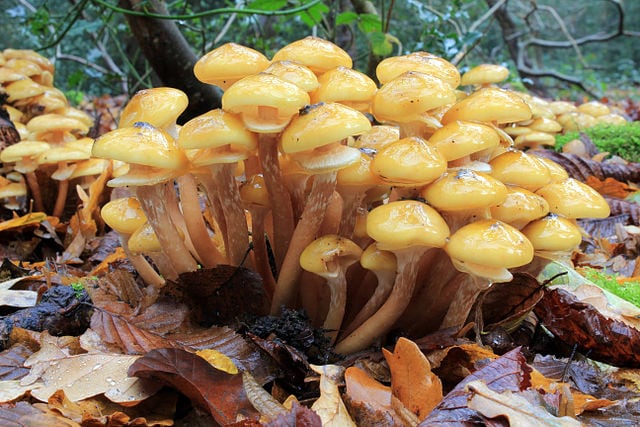
Source: wikimedia.org
The Honey Fungus is the largest organism in the world. Living in the blue mountains in Oregon, the Honey Fungus takes up an area as large as 1,665 entire football fields! This fungus is actually parasitic, and can infect entire forests–the test results of samples from 112 dying trees was actually what led to the discovery of this astounding organism.
Did You Know?
The sample of Honey Fungus discovered in Oregon was nicknamed the “Humongous Fungus,” and was estimated to be approximately 2,400 years old.
